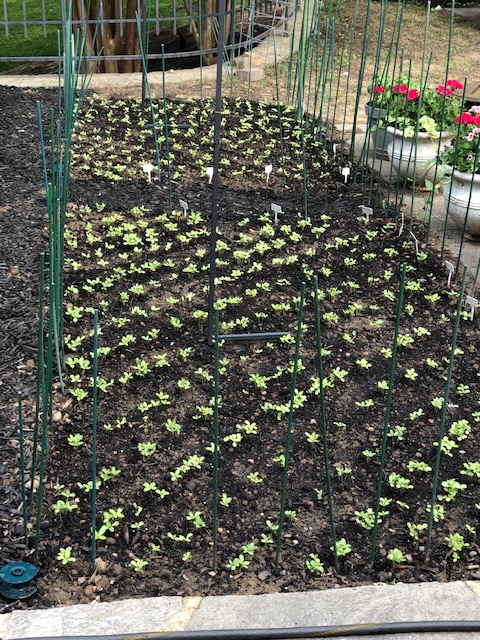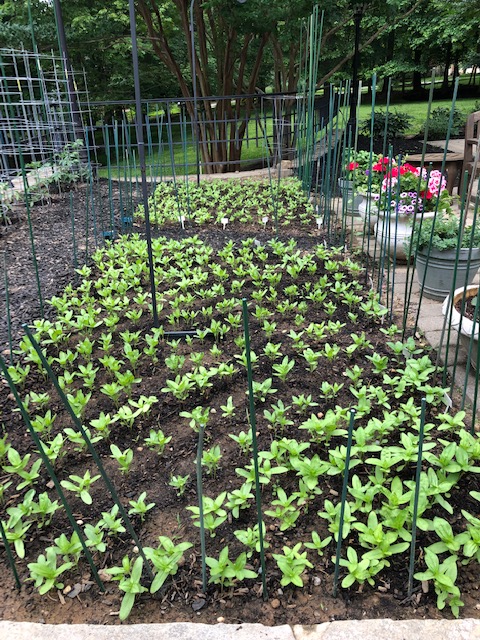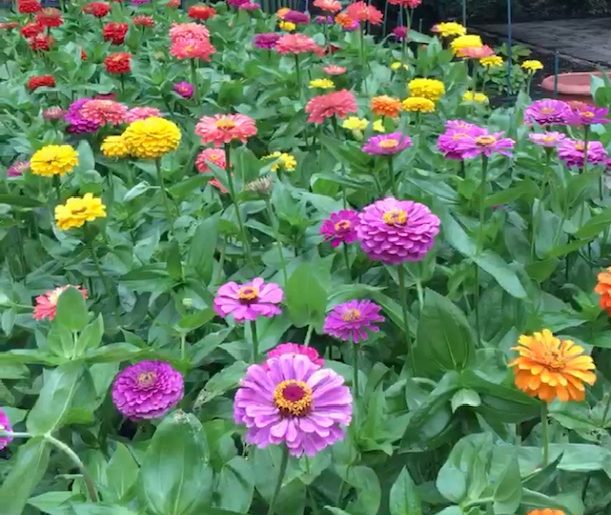COVID-19 Stay at Home Goals: On to becoming a Master Gardener!
Staying at home during the COVID-19 crisis brought out the desire to be a Domestic Goddess in many of us. Did you bake bread? Order sourdough starter? All of the grocery stores are still out of yeast and low on flour, so apparently many have now perfected those skills. Cleaned out the closets, reorganized the pantry and alphabetized the spices? Tried new recipes?
Now that the weather is nice, we can move outside and turn our attention to becoming Master Gardeners.
For several years, I have admired Carol Jean Young’s gorgeous zinnia garden in Cockeysville, Maryland, and wished I had one. Zinnias are the perfect garden annual to grow. They are low-maintenance, and tolerate heat and drought well. Give them a spot with full sun and they will reward you all summer with colorful blooms – and the more you cut them, the more they will bloom. Best of all, they are magnets for nectar-seeking butterflies, goldfinches and hummingbirds.
The vegetable and flower garden we have now is all I had time to take care of, so I always put off adding zinnias. This summer is different – I have lots of time. So I asked Carol Jean for advice and she generously walked me through it step by step.
Zinnias make you look like a master gardener
“Zinnias love very loose soil, so take the time to prepare it,” says Carol Jean. A rectangular 3’ by 6’ area is a good size to make a statement garden of about 55 plants. Till or hoe the soil and then spread a bag of organic soil mix over it. Then, use the edge of a hoe or shovel to make very shallow diagonal troughs through the whole space, placing the lines 6”- 8” apart. This will place your plants closer than the seed packets tell you to, but it works well for Carol Jean, and she thinks it makes her plants grow taller.

Now you are ready to plant seeds. There are many varieties. Butterflies especially like the large flower variety in red or hot pink so keep that in mind if you want to attract them to your garden. Carol Jean grows the tall variety – California giants – that can reach up to 5’ tall. I chose to plant Lilliput Mixed Colors that grow up to 2’ and add some 4’ sunflowers behind them for height. To grow 55 plants, you’ll need to buy at least 100-150 seeds, which should be 2-3 packets, although it’s frustrating that a lot of seed packets don’t show the quantity. A great, local to Baltimore source for all kinds of flower and vegetable seed is Meyer Seed Company, 600 South Caroline Street. You can pick them up or they will ship by UPS.
Carol Jean sows 2 or 3 seeds close together, every 6” – 8” along her troughs. When you are finished sowing, you are ready to cover the seeds with soil. “It’s very, very important to cover the seeds with only ¼” of soil,” cautions Carol Jean. “More than that and they won’t germinate.” After you have finished planting, use the shower setting on a garden hose to gently water the area. Carol Jean waters in between the rows so as not to dislodge the seeds. Until they germinate (7 – 10 days), she waters them lightly twice a day.

and they are off and growing up fast!
When the zinnia plants are 3” – 4” high, you need to thin them. Sad, but you really have to choose which of the seedlings in each spot is the hardiest and pull the others out. Zinnia plants grow very fast and shade out weeds, so you shouldn’t have to regularly weed the bed. As the plants grow taller, you may want to stake them to keep them from blowing over in wind or very heavy rain. 1” x 1” x 5’ wood stakes are available for $2.00 each at garden centers, or if you own the stakes used to mark paths for a snowplow, you can use those. You don’t have to stake every plant – staking half gives the others protection. Five weeks later, you’ll have a beautiful zinnia garden ready to brighten your home and share with friends!

Zinnias have very few problems with scourges, but a “too wet” summer can lead to powdery mildew and leaf spot. Here is an easy remedy for that if you spot it on your plants:
Homemade Spray for Powdery Mildew
Gallon of water
1 T baking soda
1 T vegetable oil
1 T dishwashing liquid
For lots of “zinnia inspiration,” check the hashtags #zinniagarden and #zinnia on Instagram and Zinnias on Pinterest. We’ll post some photos of this year’s gardens later and would love to see some of yours.
If you are a fan of Birds, Blossoms, and Butterflies, check out Carol Jean Young’s gorgeous photography on her Facebook page. Amazing what she captures!




